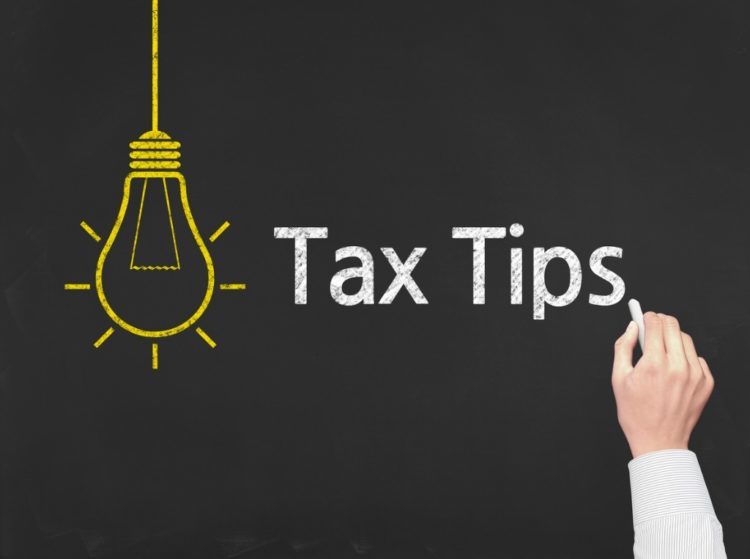2019 Year-End Tax Planning Strategies
TAX PLANNING STRATEGIES FOR INDIVIDUALS
- Know your tax rate.
This is essential. Knowing your tax rate allows you to plan to take full advantage of a given tax bracket. For instance, in 2019, if you and your spouse have an Adjusted Gross Income of $150,000, you will pay tax on the first $19,400 at the 10% rate, the next $59,550 at the 12% rate, and the final $71,050 at the 22% tax rate. Therefore, you would pay $24,717 in total tax, an effective tax rate of 16.48% (24,717 / 150,000). Knowing this is useful because you could convert $18,400 from a Traditional IRA or 401K into a Roth IRA or 401K and remain in the 22% tax bracket. Suppose you converted $18,400 and your AGI went from $150,000 now to $168,400. You still remain in the 22% tax bracket, so your total tax would go from $24,717 on $150,000 to $28,765 on $168,400. Your effective tax rate becomes 17.1%. For any of those individuals out there that believe tax rates will increase, or that your income will go up in the future, converting Traditional IRAs to Roth IRAs can be an effective tax strategy. See the 2019 tax table from Credit Karma here. - Shelter income tax within 401K and IRAs.
If you work for a company and receive the option for a 6% 401K match, then you would at a minimum like to contribute 6% to receive the full company match A.K.A a 6% raise to your total salary. There are several benefits of investing in 401Ks – 1) you receive a tax deduction and 2) you get to invest the money which will earn a higher return, long term, than any bank account, CD, etc. So, now let’s assume that you do some tax planning mid-year, around June, and determine that you and your spouse will earn $178,400 for 2019. This is $10,000 above the 22% tax bracket. Therefore, on this $10,000 your tax rate will increase to the 24% tax rate. This means you would owe an additional $2,400 in tax to the IRS. The tax savvy individual instead could elect to increase their 401K contributions by the $10,000 and save $2,400 in taxes. This would keep you in the 22% tax bracket rather than forcing you into the 24% bracket. This $2,400 saved in taxes and invested for 10 years earning a 10% rate of return will grow more than 2.5X, being worth approximately $6,200. This is just the tax savings, not to mention the $10,000 invested would have grown to approximately $26,000. See for yourself on Bankrate’s Investment Calculator here. - Take advantage of Tax Loss Harvesting.
Individuals investing inside of a taxable, non-retirement account have an opportunity to sell investments that are down for a tax loss of up to $3,000 per year. Be aware about the wash-sale rule when reviewing this strategy. It is advisable to contact a tax or financial advisor for assistance with understanding some of the rules around tax-loss harvesting. For instance, assume you have a stock in the financial services industry that is down 10%, while the financial services industry is up 10% for the same period. You may decide that the stock no longer fits your profile, maybe the business fundamentals have changed, a CEO was fired, etc. You could sell that stock and claim a tax loss of up to $3,000 and then purchase a financial services investment fund. You can sell one stock or fund for another as long as they are not substantially identical. This CNBC article talks about tax loss harvesting here.
TAX PLANNING STRATEGIES FOR BUSINESSES
- Shelter profits in retirement plans.
As a business owner, you can shelter income and profits with different business retirement accounts. Depending on the age of your business, how many full-time employees you have, and how long these employees have worked at your entity, you could shelter up to $56,000 from tax in 2019. Depending on the structure of your business, you may have unique options to shelter tax and do so in a more efficient way. There are Self Employed 401K’s, 401K’s, SEP IRAs, and SIMPLE IRAs. Each have different rules and considerations. It is advisable to review this with a tax or financial advisor. See Fidelity’s comparison for the different small business retirement plans here. - Do year-end planning.
This one is crucial. We should be planning all year-round, however, focusing on year-end planning is just as important. Come around mid-November is when it becomes “crunch time.” Before we know it, Thanksgiving, Christmas, family, and several other holiday traditions surface. Before we know it, it is the last week in December, payroll isn’t ready, and we end up missing opportunities to save $20,000 in taxes or more, depending on your tax situation and business profits. See TheBalance’s checklist for Small Business Year End Planning here. - Change your business structure for 2020.
Reviewing your business structure is important. For instance, if you file as a Sole Proprietor, you could look at what filing as an S-corporation could do for you. Or maybe you have 25-50 staff members working for you, and you currently file as a C-corporation. You could review if the C-corporation is the correct entity or if an S-corporation may be a better fit. Forming an LLC also offers many advantages. See LegalZoom’s article on advantages of LLC here.
Final Thought:
You can reduce the amount of taxes you pay if you take advantage of breaks and opportunities that are out there. It’s up to you (and your advisor) to discover new ways to lower taxes for your small business. With all of the new rules for personal and business tax deductions, the moves you make now can potentially save you significant amounts of money this year and into the future.







